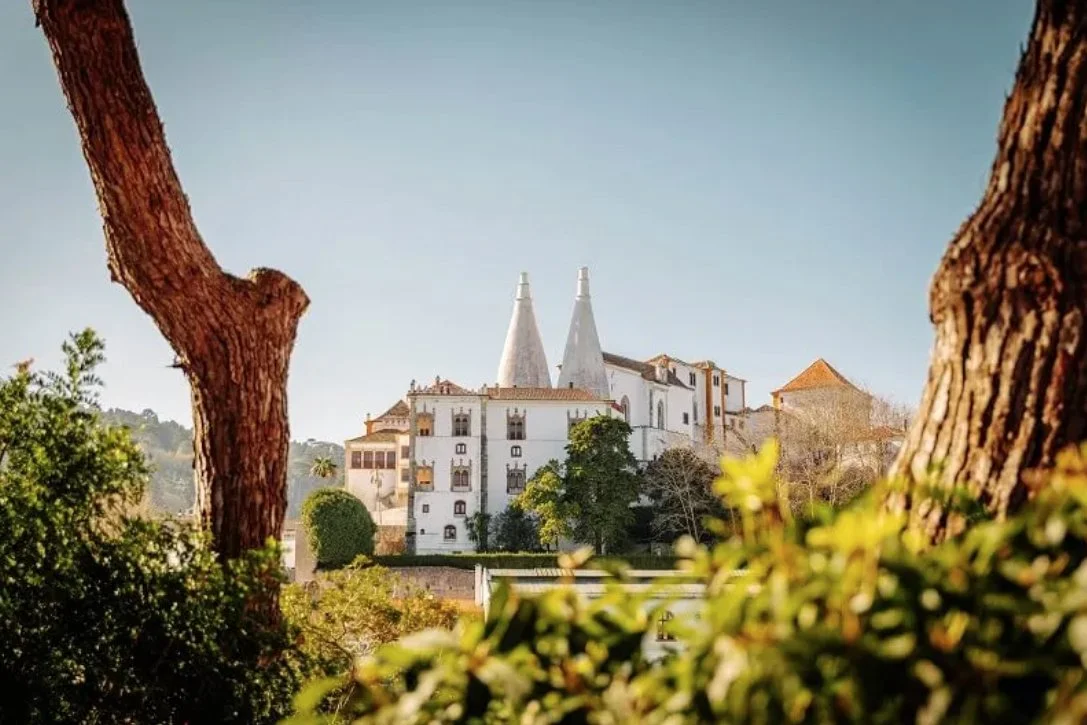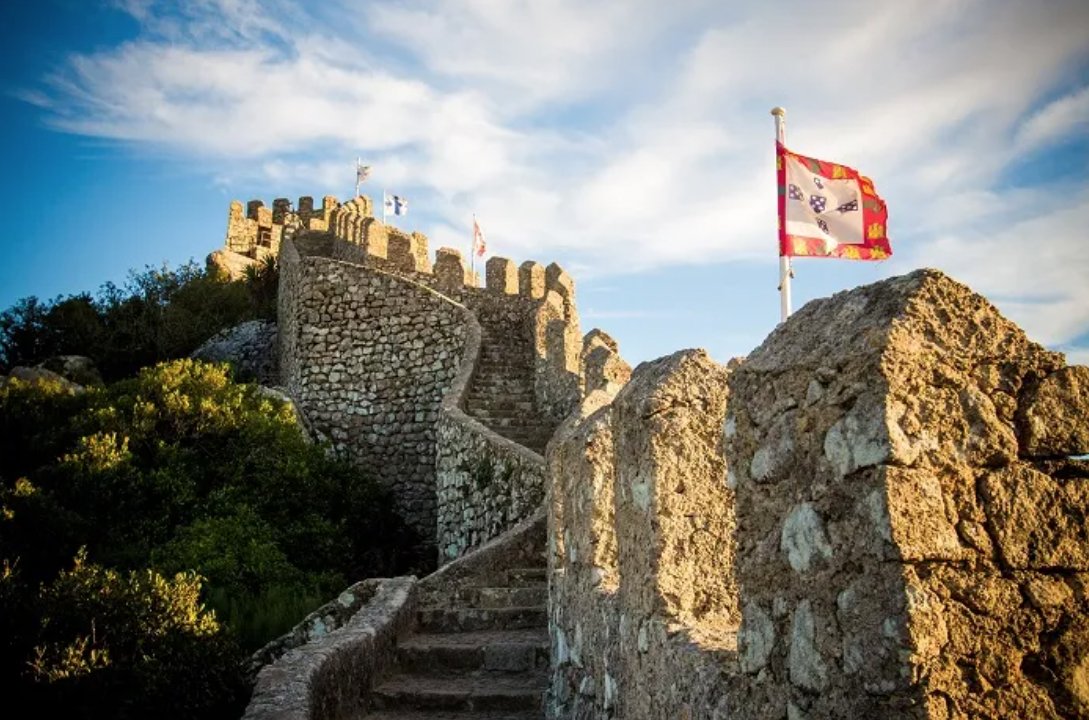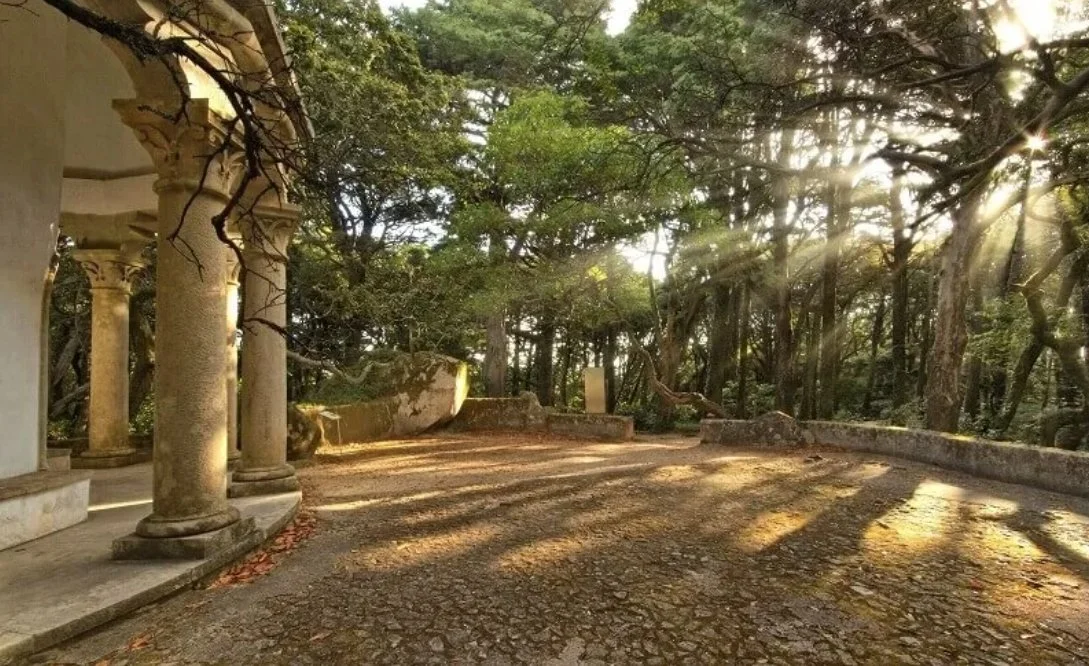Portugal’s “Glorious Eden”
Photo: Palácio da Pena - ©PSML/By Luis Duarte
Eclectic romanticism
In his poem Childe Harold’s Pilgrimage, about a disillusioned young man’s European wanderings, English Romantic poet Lord Byron referred to Sintra as “glorious Eden”, after a visit in 1809.
We won’t let Byron write this article, but it is difficult to resist the following quote: “Sintra contains beauties of every description, natural and artificial. Palaces and gardens rising in the midst of rocks, cataracts and precipices, convents on stupendous heights, a distant view of the sea and the Tagus…”
Portugal’s ‘Eden Project’ sits atop the Sintra Mountains, about 30 kilometres to the west of central Lisbon, on the way to Cabo da Roca, the westernmost point of continental Europe.
Essentially, Sintra has not changed much since Byron’s day. Among dense forests of different species of oak and luxuriant gardens, the contemporary traveller feasts their gaze on an eccentric collection of Romanticist architecture that includes neo-Gothic, neo-Manueline, neo-Islamic and neo-Renaissance.
After the destruction of the centre of Sintra, collateral damage in the massive 1755 Lisbon earthquake, Portugal’s aristocrats instructed their architects to rebuild. This time no stone would be left unturned. A succession of fantastical turrets, towers, spiral staircases, follies, and grottoes soon left the drawing board.
Palácio Nacional de Sintra – ©PSML/By Luis Duarte
The architects were inspired and their patrons wealthy. It is no coincidence that, a few years before Byron’s visit, another haut-en-couleur English writer, William Beckford, the extravagant millionaire owner of Fonthill Abbey, lingered in Sintra where he was the tenant of Monserrate and its vast gardens.
The jewel in this fashionable crown was royalty. Sintra had been associated with the Portuguese monarchy since medieval times and the Palace of Sintra, located in the centre of the town, was a summer residence for generations of the royal family. A pair of conical, white chimneys rises from the kitchens like champagne bottles.
For people of note in 18th- and 19th-century Portugal in particular, Sintra was a place to be seen and to acquire a residence. The Sintra brand endowed standing and could be appropriately customised with a little architectural individuality.
Palácio Nacional de Sintra – ©PSML/By Luis Duarte
Travellers from all over Europe arrived to marvel: artists, ever more writers and also composers, with the journey from Lisbon made easy by the opening, in 1887, of a railway running from an elegant neo-Manueline station in central Lisbon. Although the Portuguese monarchy has long since been swept away, Sintra remains fashionable and is listed as a UNESCO World Heritage Site.
High above the town, a medieval castle and a 19th-century palace survey each other across a green chasm. The Castle of the Moors is reached after a steep wooded climb. The strong-kneed are rewarded by a jaw-dropping view, in which a myriad of architectural fantasies float among the trees.
Castelo dos Mouros – ©PSML/By Luis Duarte
On the day this writer made the climb, mist swirled adding an additional touch of make believe to the landscape. If you like challenges, walk around the ramparts, a dizzying experience which gives an idea of what it might be like to be a bird that has forgotten how to fly and got stuck on a precipice. It is claimed the great Portuguese poet, Luís de Camões, read his epic poem Os Lusíadas standing on the ramparts, but maybe better not to push your luck.
The National Palace of Pena, designed by a German, Baron von Eschwege, glides in and out of the mist, like a castle in a German fairy tale. The palace is visible for miles around and even, on a fine day, from Lisbon.
A fundamental cause of Sintra’s celebrity is its microclimate. The Sintra Mountains are a granite massif, with higher humidity and cooler temperatures, favouring the area’s legendary exotic flora. In the summer, Sintra offers a more refreshing environment and gardens with shade, a respite from the intense heat of Lisbon. But perhaps the best moment to visit is in the spring or autumn, when there are fewer crowds.
Palácio da Pena – ©PSML/EMIGUS
Byron stayed at Lawrence’s Hotel, established in 1764 and the oldest hotel in the Iberian Peninsula. Had Byron stayed at the end of the 19th century, rather than the beginning, he would have encountered the marvellous Portuguese realist writer Eça de Queiroz. One can only imagine the conversations the two men might have enjoyed together. Intimate and steeped in old-world charm, Lawrence’s boasts an excellent restaurant and equally tempting outdoor spaces. The most fortunate will perhaps find a fireplace in their bedroom.
Wine romantics may feel drawn to the wines of Colares, once compared to those of the Médoc and famed for surviving phylloxera in the late 19th century. Today, no more than 50 hectares of vineyard plots survive, among the dunes between Maçãs Beach and Magoito, where the vine roots dig deep into the clay subsoil and the vines are protected from the Atlantic winds by low walls. The Garrafeira Nacional shop, in Lisbon, stocks a few bottles of these intriguing wines, in both reds and whites.
Praia das Maçãs is an exceptionally beautiful and unpretentious ‘bucket and spade’ holiday beach reached from Sintra, during the summer, on an ancient tram. The vast expanses of the Atlantic Ocean stretch between bathers and America.
Pensão Sisudo, a few minutes’ drive from Praia das Maçãs, has been offering appealing bed and breakfast since 1953. Downstairs, they also run a highly successful restaurant where a traditional blackboard menu has been given a contemporary twist, with friendly service and a well-chosen wine selection. On the day of our visit, the tempura green beans were perfectly cooked and the grilled octopus full of flavour.
While in Sintra, Essential Algarve’s correspondents attended the bucolic wedding of an Australian / American couple who had met on the camino whilst walking to Santiago de Compostela. Although this delightful couple have since lived for several happy years in Melbourne, they had always known that when they got married it would have to be in Portugal, where they had first met. Indeed, what wedding location could be more romantic than Sintra!
First published Essential Algarve, November 2023






